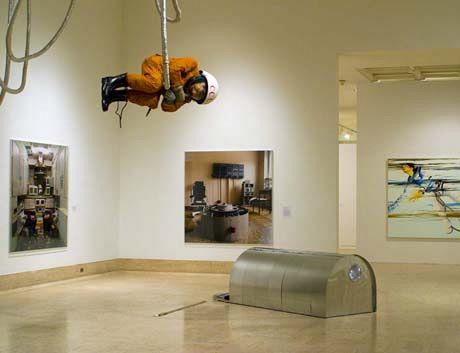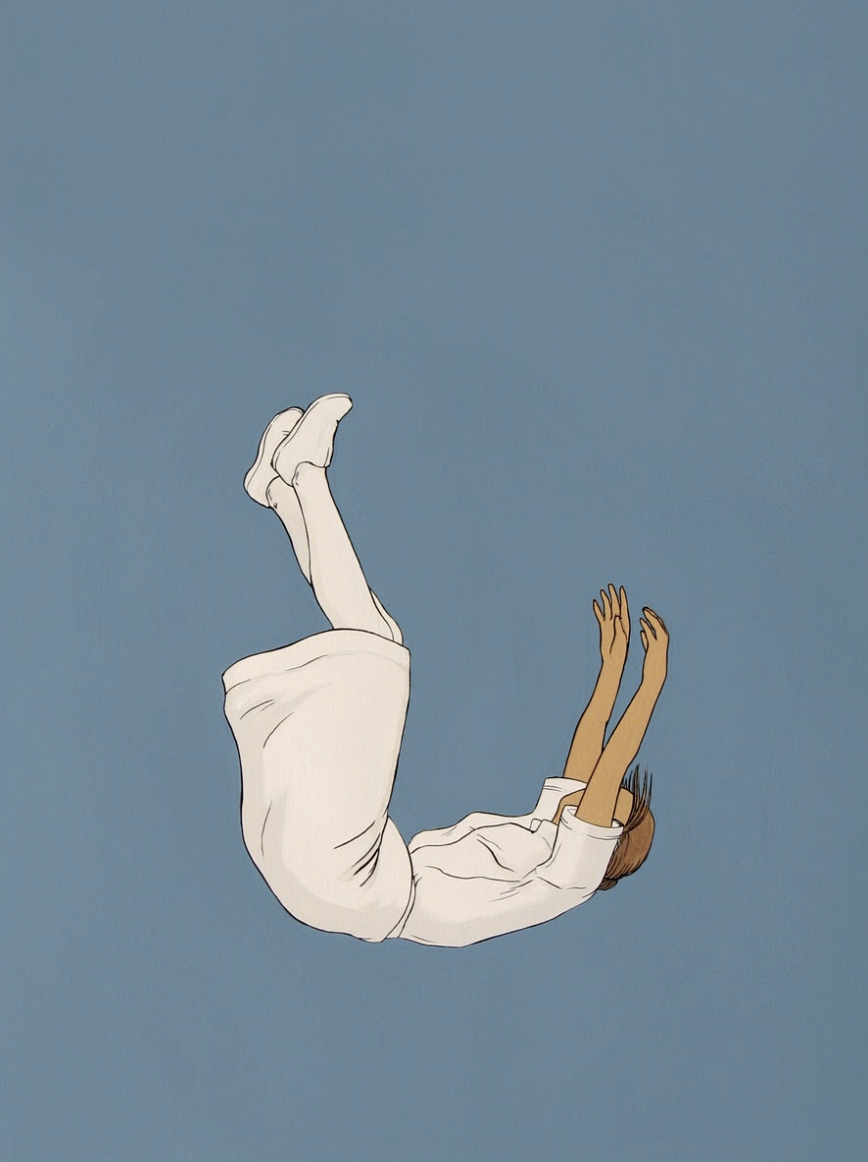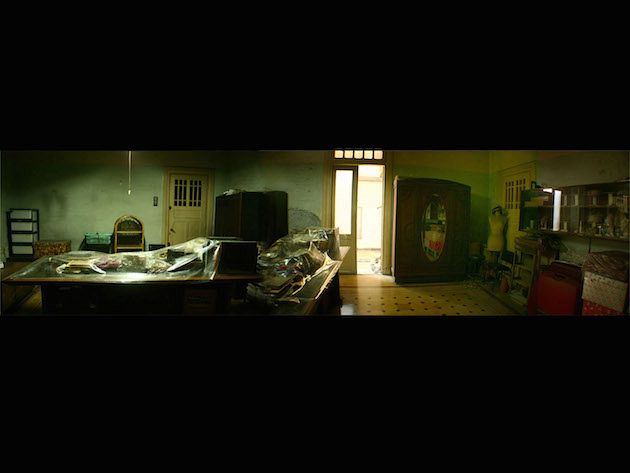The theme of space exploration — its infinite potential, as well as its historical successes and failures — is the focus of Space Is the Place, which features an international group of artists, with work made during the past fifteen years. The paintings, sculptures, photographs, installations, sound and video works in this exhibition represent space as both a realm of infinite possibility and a place fraught with problems. Global attitudes toward this subject have always been charged, beginning from the Soviet launch of the Sputnik satellite nearly fifty years ago, through the euphoric moonwalk of the sixties, to the more recent shuttle disasters, and the ongoing spectacular construction of an international space station. Despite recent setbacks, travel to outer space remains a powerful catalyst for contemporary artists, inspiring nostalgia, fantasy, and reflection on earthly concerns during a time of great terrestrial conflict. Among the subjects reflected in the work in Space Is the Place are the Cold War, the environment, issues of race and gender, and the concept of technological utopia. Included in the exhibition are works such as a new piece from NASA’s first artist-in-residence, Laurie Anderson. “When you hang out at NASA,” Anderson observed, “you realize that a lot of research has to do with beauty, starting with Einstein, who rejected certain theories because they violated his aesthetic sense.” Recent works relating to Anderson’s musical/performance pieces inspired during her time at NASA highlight the importance of imagination and dreaming in the quest for space travel.
In space, the body becomes simultaneously free and vulnerable. In a zero-gravity vacuum, it is capable of extraordinary feats, but is only a few layers of metal or clothing away from instant death. The possibilities for and threats to the human form in space are investigated in several of the works in the exhibition. The video work from the group MIR Project explores this notion as they depict people delightfully floating during a performance work that took place on a zero-gravity flight. Diverging from factual reality but imitating its appearance, Julian LaVerdiere’s F.A.M.S.F./Crash Site Memorial adopts the presentation styles of history museums and documentary films. In this work and others relating to it, the artist infuses these seemingly straightforward approaches with dramatic intimations of conspiracy theory and the tropes of Romanticism. The artist sets up a fictitious narrative revolving around the German World War II V-2 rocket, which was actually used to bomb London during the final stages of the war and was the first missile to enter space. In his fiction, LaVerdiere develops a pseudo-narrative using toy models, a hoax film documenting the discovery of the lost V-2, and photographs with captions adhering to the format of an Associated Press statement. In a final gesture of humorous defiance, he inserted some of these fabricated images into the Associated Press archive, certain to confound future V-2 and space program researchers.
While all of the works in the exhibition are united by the primary theme of outer space, the open-ended parameters of the subject invite consideration of other issues relating to the technological, environmental, and sociopolitical forces affecting life on earth. For example, the intersection of identity politics and space exploration is dealt with in the sculpture of Damián Ortega of Mexico, who employs an extraterrestrial perspective to reflect on social and political conditions in his country, which has no autonomous aeronautical programs. In Ortega’s Aterrizaje en la luna (Voyage to the Moon), the disparity between a developing nation’s poverty and the costs required to sustain a space program is referenced in his shelter that is part space capsule, part homeless dwelling. Made of galvanized metal and equipped with a mattress, sleeping bag, and a copy of a comic book recounting the story of a moon voyage, one imagines this small space capsule simulating for a child the restful, imagination-inspiring aspects of extraterrestrial travel; or for a homeless person, it would provide shelter from a real-world environment that can be as inhospitable as the surface of the moon.
Many of the artists in Space Is the Place manifest a powerful nostalgia for a future that never was. The idea of space exploration has changed quite dramatically since the first moonwalk, a time period that is conjured, albeit darkly, in the work of British twins Jane and Louise Wilson. Their photographic work, Service Module, Mir, 2000, was made at an antiquated cosmonaut training facility outside Moscow. The Wilson sisters gained access and captured images of such iconic subjects as the now-defunct hangars used to launch, store, and transport rockets, as well as abandoned piles of space suits and lockers signed by generations of cosmonauts and astronauts. This meditation on the decaying facility—once the epitome of space-age modernism—serves as a potent reminder of the hubris, courage, and naiveté that fueled the space race. Another artist who evokes nostalgia for a space age that never came to be is Adam Ross. Reared during the Kennedy-era space race, Ross belongs to a generation of Americans who believed that the technologies driving the Apollo moon flights would lead to a future that was cleaner, healthier, and more egalitarian. His intricate paintings, made in a precise, fantastic-realist style, depict vast spacescapes filled with ominous technologies, solar sails, self-generating machines, and nanotechnological devices.
The exhibition takes its title from a film about the influential jazz fusion band, the Sun Ra Arkestra, whose leader, Sun Ra, claimed to be from Saturn. He spoke of making music sublime enough to elevate humanity beyond Earth, transcending reality. Much like the trademark cosmic themes of Sun Ra, Space Is the Place presents a diverse, engaging, and illuminating vision of themes relating to the inviting realm beyond our planet.












